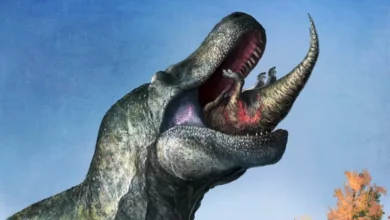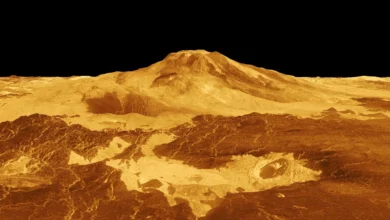Latest Articles
-
Apr- 2023 -3 AprilHealth

Glycine Unmasked: A Game-Changing Discovery in Depression and Anxiety Treatment
Lead Image: Scientists at the Wertheim UF Scripps Institute for Biomedical Innovation & Technology have discovered that the amino acid glycine can send a “slow-down” signal to the brain, potentially contributing to major depression, anxiety, and other mood disorders. The findings, published in the journal Science, could help develop new, faster-acting medications for such conditions. The research focused on a receptor called GPR158, which, when bound to glycine, inhibits rather than activates cell activity. This receptor has been renamed mGlyR (metabotropic glycine receptor) and is being pursued as a drug target by startup company Blueshield Therapeutics. Further research is needed…
Read More » -
2 AprilNanotech

Inspired by Butterflies: Scientist Creates the Lightest Paint in the World
Lead Image: A University of Central Florida researcher has developed an eco-friendly, lightweight paint inspired by butterflies. The plasmonic paint uses nanoscale structures instead of pigments, resulting in energy-efficient and long-lasting colors. It’s also the lightest paint in the world, with a full coloration achieved at a mere 150-nanometer thickness. Instead of pigment-based colored paint, which requires artificially synthesized molecules, a UCF researcher has developed an alternative way to produce colored paint that is more natural, environmentally friendly, and lightweight. A researcher has developed an environmentally friendly, lightweight, and long-lasting paint inspired by butterflies. Instead of using artificially synthesized pigment…
Read More » -
1 AprilPaleontology

Jurassic Makeover: Revealing the True Faces of Predatory Dinosaurs Like T. rex
Lead Image: A juvenile Edmontosaurus disappears into the enormous, lipped mouth of Tyrannosaurus. Credit: Mark Witton A recent study challenges the depiction of predatory dinosaurs like Tyrannosaurus rex with exposed teeth, suggesting they had scaly, lizard-like lips instead. By examining tooth structure, wear patterns, and jaw morphology of reptile groups, researchers concluded that theropod mouth anatomy resembles lizards more than crocodiles. The findings imply that many popular dinosaur depictions, including the iconic Jurassic Park T. rex, are incorrect. This research provides valuable insights into the appearance, feeding habits, dental health, and evolutionary patterns of dinosaurs and other extinct species. A…
Read More » -
Mar- 2023 -30 MarchAstronomy

Venus Is Alive!
Lead Image: Maat Mons is displayed in this computer-generated, three-dimensional perspective of the surface of Venus. The viewpoint is located 634 kilometers (393 miles) north of Maat Mons at an elevation of 3 kilometers (2 miles) above the terrain. Lava flows extend for hundreds of kilometers across the fractured plains shown in the foreground, to the base of Maat Mons. NASA Magellan mission synthetic aperture radar data is combined with radar altimetry to develop a three-dimensional map of the surface. The vertical scale in this perspective has been exaggerated 10 times. Credit: NASA/JPL New Evidence That Venus Is Volcanically Active…
Read More » -
30 MarchAI

Can AI Help Find Life on Mars or Icy Worlds?
Lead Image: A recent study led by SETI Institute Senior Research Scientist Kim Warren-Rhodes and published in Nature Astronomy brings us closer to discovering extraterrestrial life by mapping scarce life forms in extreme environments. The interdisciplinary research focuses on life hidden within salt domes, rocks, and crystals at Salar de Pajonales, situated at the border of the Chilean Atacama Desert and Altiplano. This study could help pinpoint exact locations to search for life on other planets, despite the limited opportunities to collect samples or access remote sensing instruments. Wouldn’t discovering life on other worlds be made easier if we knew…
Read More »










